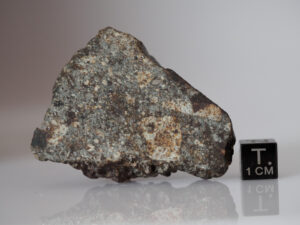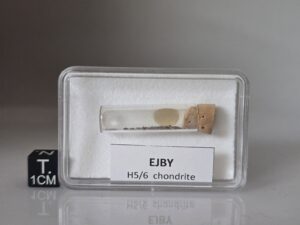Description
On May 22, 1869, a violent detonation is heard in Morbihan. Several Witnesses see a meteor burst and then hear the detonation a minute and a half later. In La Trinité-sur-Mer, a witness sees the car split into two parts. The first part continues its route to the north to fall near Cléguérec – it is this stone that will be found – while the second part goes east and had to fall east of Vannes – this second stone has apparently never been found. We learn in an article published in the Courrier de Bretagne and dated May 26, 1869 that the bolide had a global trajectory from south to north and that it was seen beyond the island of Groix, in Lorient, before falling at Keranroué (commune of Cléguérec), between the hamlet and the Blavet river.
On 3 June, the Courier de Bretagne and l’Abeille de Lorient inform their readers that fragments of the meteorite have been collected.
A young girl who is nearby of the point of impact was so frightened that she fell ill, according to Stanislas Meunier in 1884. Village women who were on the edge of the gifted* twisting their laundry saw arrive a “great blade of fire” which went to strike an oak tree located about thirty meters from them.
The day after the fall, the inhabitants of the village went there and broke the stone into many pieces that they shared, convinced that they had “found the Moon.” The initial mass is estimated at 50
to more than 100 kilograms according to the stories.
The tax collector of Cléguérec, Mr. Popeguin, holds a fragment of about fifteen kilograms. Mr. Ducasse seems to have a piece of similar mass, from what we can read.
It is more than likely that the specimens in the museums come from these two fragments of the meteorite.




